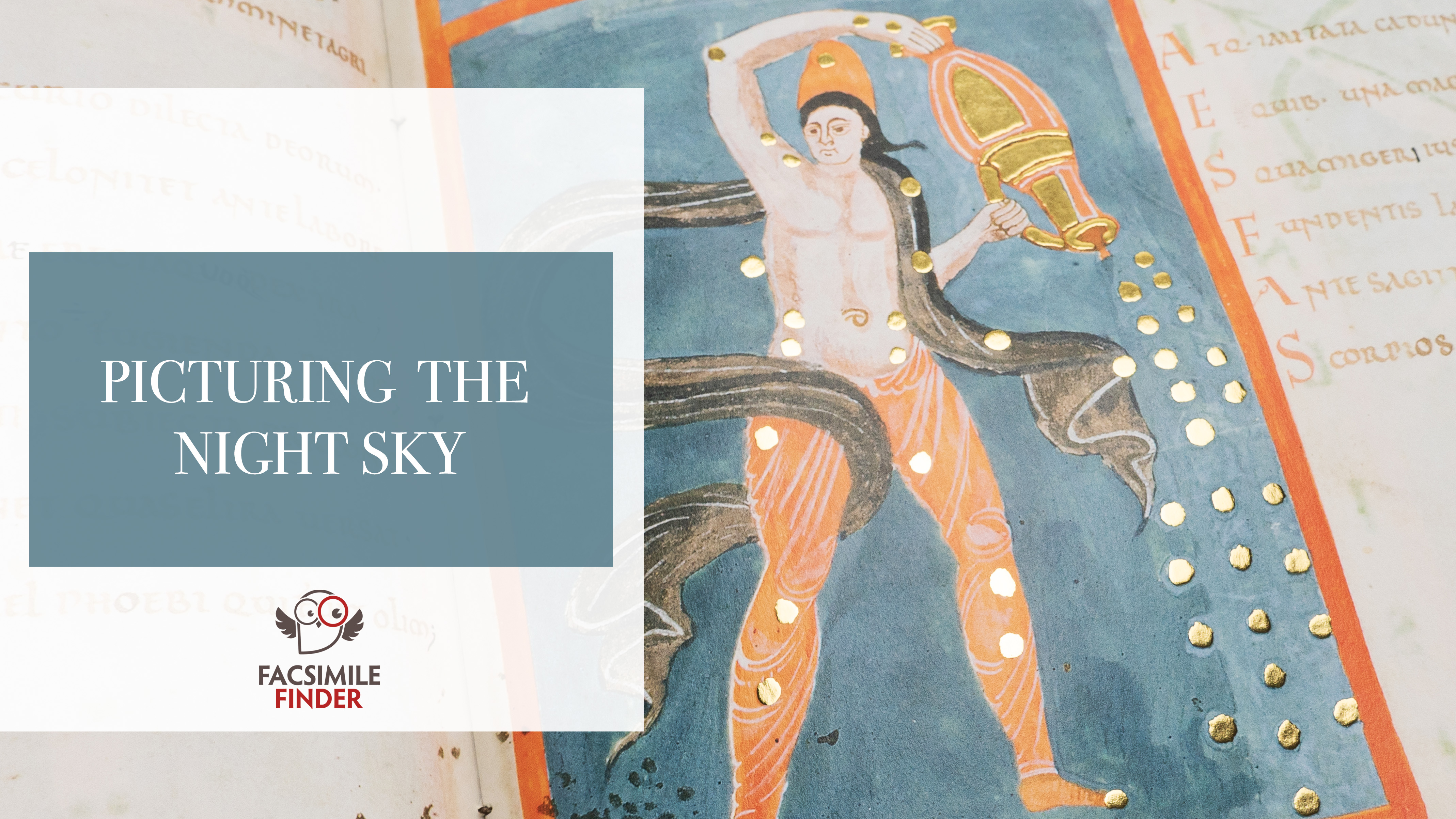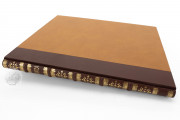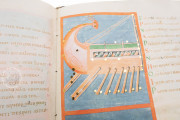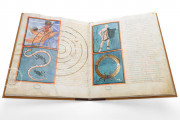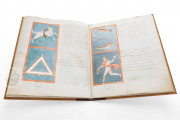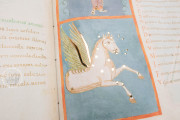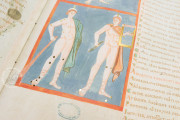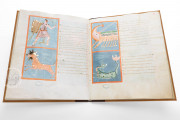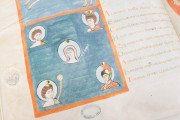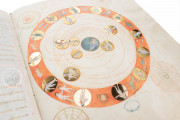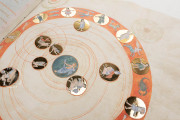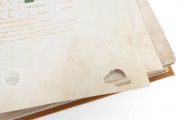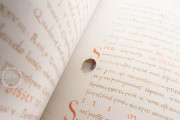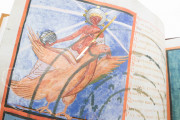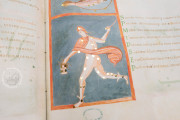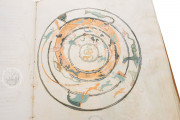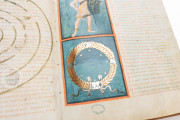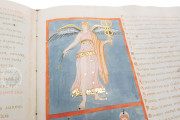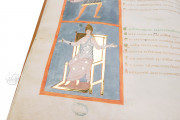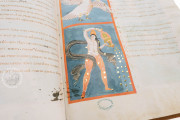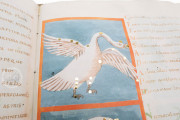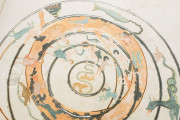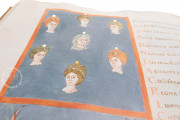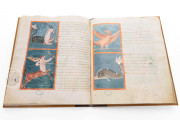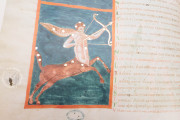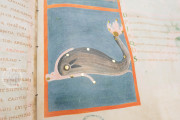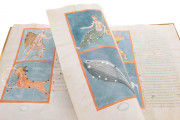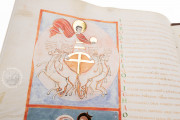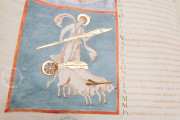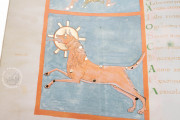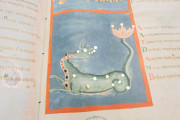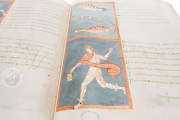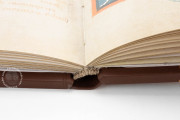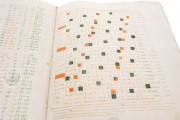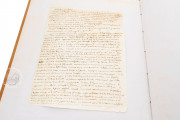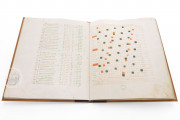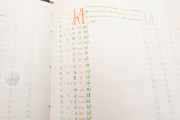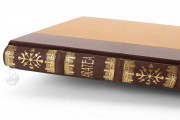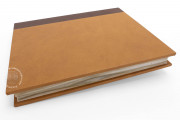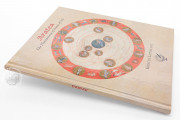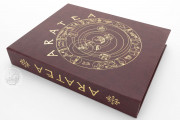The Boulogne Aratea is an illuminated handbook of the constellations preceded by a calendar. It was made around 1000 presumably at and for the abbey of Saint-Bertin in St.-Omer. Forty-one framed miniatures embellish its Latin poetic description of the make-up and relative positions of the constellations. Most depict configurations of stars as animals, humans, and objects on bright blue grounds. Two pages (fols. 20r and 30r) are entirely occupied by a celestial planisphere and a circular planetary diagram, respectively. Lively personifications of constellations, planets, and months populate these images.
The main text is an ancient Latin poetic translation attributed to Germanicus Caesar (d. 19 CE) of the Phaenomena by the Greek poet Aratus of Soli (third century BCE), with interpolations from another Latin translation and expansion of Aratus's text by Rufius Festus Avienius (4th century CE). A calendar and calendrical tables precede the ancient astronomical text.
Gods, Heroes, and a Menagerie
Thirty-seven constellation miniatures preceded and followed by images of the sky-god Jupiter (at the beginning) and the planets (at the end) occupy the left columns of pages arranged in two columns (fols. 20v-29v). The verse text occupies the second column. The palette is dominated by red-orange, blue, violet, and green, with silver and gold also employed.
The opening miniature shows the Roman sky god Jupiter reclining on his eagle (fol. 20v). He has a silver halo from which seven rays emanate. Bare-chested and partially draped in a light purple robe, he holds a silver orb and a golden stick.
The constellations take the form of the Greco-Roman heroes Hercules (fol. 21r) and Perseus (fol. 25r), as well as a river god, a variety of human and hybrid figures of ancient mythology, animals, and inanimate objects. The hybrids include the winged horse Pegasus (fol. 24r) and the half-human Centaur (fol. 29r). The classical sea monster Cetus takes the form of a dog-like creature with a fantastical fish tail (fol. 28r).
Seeing Stars
Gold dots (mostly round, but sometimes angled into squares) indicate the placement of the stars in the constellation miniatures. Although now abraded, gold dots marked at least some of the stars of the constellations in the full-page planisphere.
A Rare Survival
The Boulogne Aratea is one of only three surviving illuminated copies of this Latin version of Aratus's poem. Its text and images are closely related to those of the ninth-century Leiden Aratea, but whether the creators of the Boulogne manuscript copied directly from the Leiden manuscript is unclear.
Scripts of Ancient Rome
The main text of both the Leiden and Boulogne manuscripts is written in Rustic Capitals, the script used for literary texts in late Roman antiquity, and their texts and images ultimately rely on a late antique model.
In the calendar and computus tables (used for calculating the dates of Christian holidays) of the Boulogne Aratea, generous use is also made of another script of Roman antiquity, the rounded majuscule known as Uncial (fols. 1-10). Only the explanation of the tables is written in the Caroline Minuscule script characteristic of the period (fols. 11-19).
From a Medieval Monastery to a Modern Library
The Aratea is one of eighty-one manuscripts from the monastery of Saint-Bertin selected in the wake of the French Revolution for the newly formed Bibliothèque municipale in the coastal city of Boulogne-sur-Mer. The medieval manuscripts in the municipal library moved in 1975 to a completely renovated building that was formerly home to a community of nuns of the contemplative Order of the Annunciation.
We have 1 facsimile edition of the manuscript "Boulogne Aratea": Boulogne-sur-Mer Aratea facsimile edition, published by Incipit, 2023
Request Info / Price
